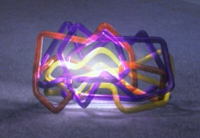The car in front of me misjudged a traffic light and stopped in the crosswalk. Braking early, I left a gap should the driver wish to back up. Then I wondered, would an autonomous vehicle extend the same courtesy? But I'm getting ahead of myself. Before being courteous, autonomous driving has yet to master the rules of road. There are two prevailing approaches: solve for general AI or use geo-fencing. The former, pursued by Tesla, is harder to achieve but will make autonomous cars capable of driving on almost any road. The latter, used by GM Cruise and Alphabet Waymo, is easier to achieve, but restricts autonomous cars to certain locations. GM Cruise is already accepting fares for its driverless taxi in San Francisco. The service, however, is bound by both time and space, allowed only to run between 10pm and 6am (lighter traffic) and within a 7x7 mile area. Choices and trade-offs such as these are common when planning and building a future. Thirty years ago, Apple introduce...



Comments
I just had a thought. Would it work for you if I would (try to) collapse the grafitti area each time you rotate?